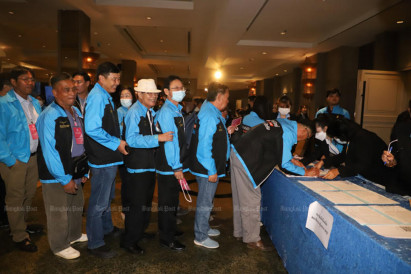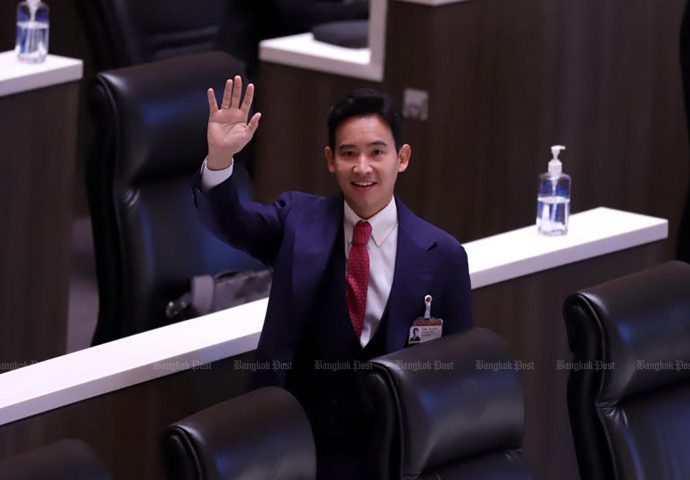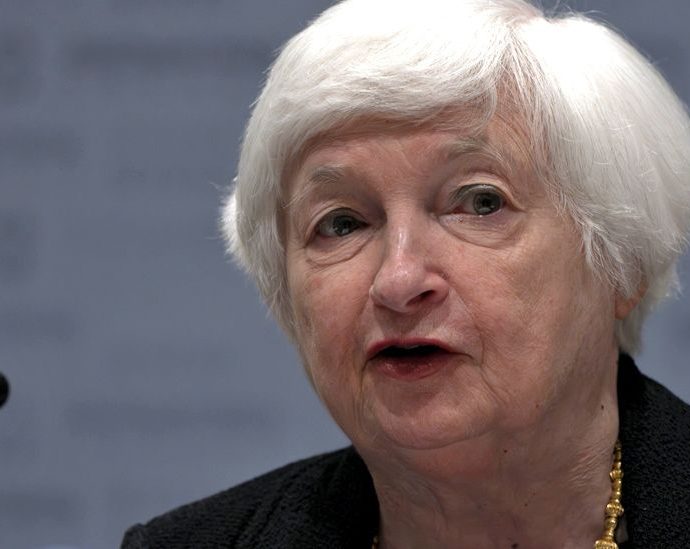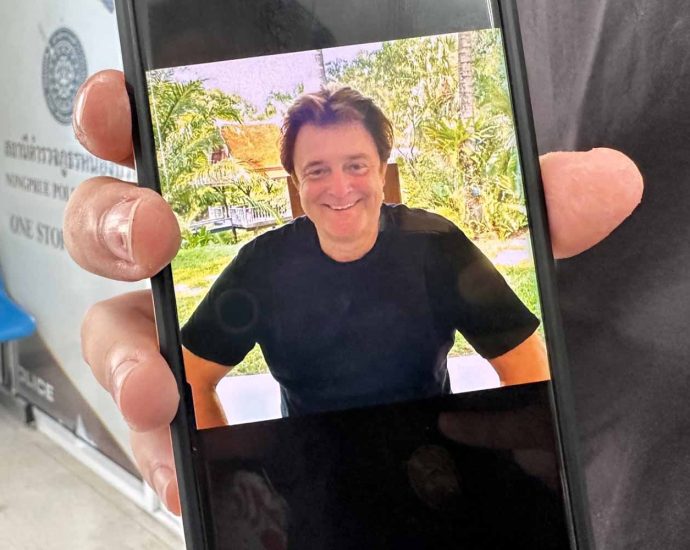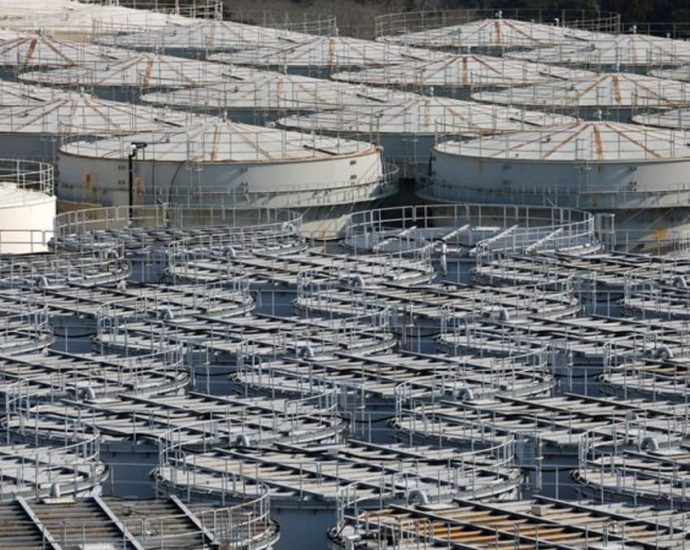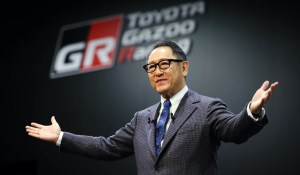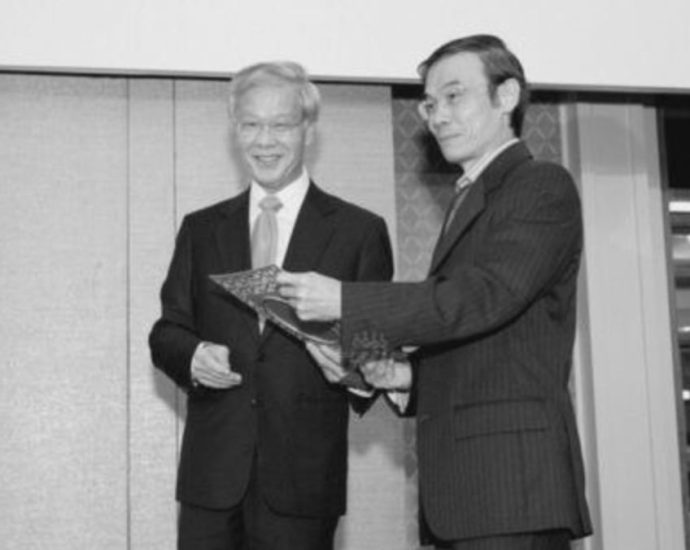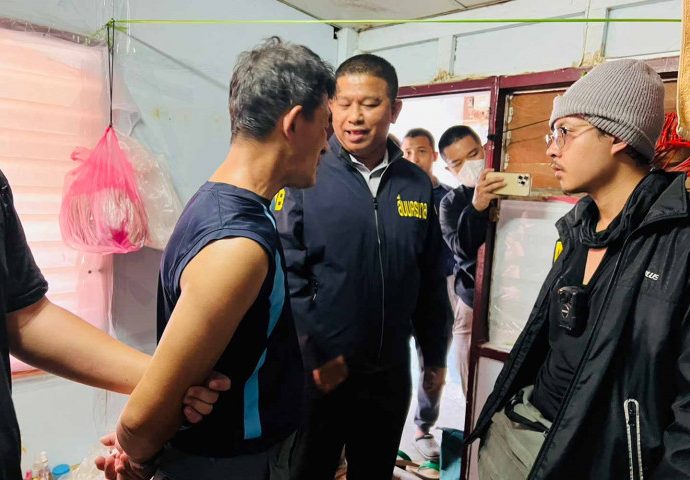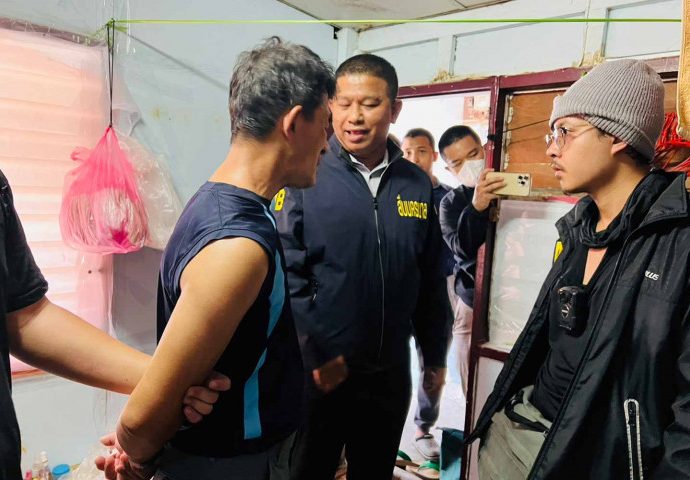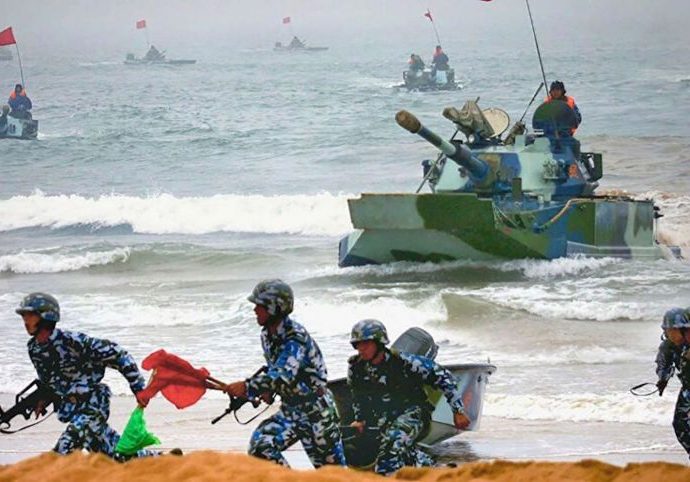Democrats fail to pick new leader

A meeting of the Democrat Party failed to elect a new leader and party executives because of a lack of quorum on Sunday.
The special meeting started at Miracle Grand Convention Hotel in late morning because Jurin Laksanawisit resigned as the party’s leader on May 14 as results of the general election filtered through.
His resignation caused an automatic end to the Democrats’ executive board under his tenure.
Key Democrats showed up for the planned vote on Sunday morning. They included former leader Chuan Leekpai, Banyat Bantadtan, Mr Jurin and Abhisit Vejjajiva – who refused to comment on a report that he would be nominated as a candidate for the leadership.
The party had its quorum for the meeting when it started at 10am as 299 members attended it. Its quorum needed at least 250 present party members.
Mr Jurin, who presided over the meeting, thanked party members for overcoming both internal and external challenges. He said he believed the Democrat Party would return to its glorious past. The party won 25 out of 500 House seats in the May 14 general election.
Party members then discussed regulations on voting weights between present and former Democrat MPs versus former leaders, ministers and political position holders. Acting Democrat deputy leader Ong-art Klampaibul proposed the party postpone the vote for 60 days.
At 2.30pm the party checked its quorum which turned out to be insufficient because there were only 221 attendees.
The meeting adjourned to wait for more attendees. At 3pm its quorum was checked again and there were only 201 participants. Mr Jurin then closed the meeting. He said he would convene the next meeting on Wednesday.
Party leadership hopeful Mallika Boonmeetrakul said many Democrats sat outside the meeting venue and caused the lack of a quorum.
Before the meeting, Mr Chuan – a well-respected former prime minister – said there was palpable concern about the future direction of the 78-year-old party.
Activist Ruangkrai continues crusade against PM hopeful Pita

Political activist Ruangkrai Leekitwattana has continued his crusade against Move Forward leader and prime ministerial candidate Pita Limjaroenrat.
Mr Ruangkrai said he had earlier sent a letter to the Election Commission (EC) asking it to investigate and seek a Constitutional Court ruling whether Mr Pita, in holding the copyright of four books he authored, publishing them and making some income from selling them, had forfeited his right to be an MP and candidate for prime minister under Sections 98 (3) and 101 of the 2017 constitution.
Veteran politician Ruangkrai – known for switching parties and allegiances, and previously described as a political “giant-killer” – said that following his letter to the EC, many people commented online without true knowledge of the law.
To clarify matters, he said on Sunday he was sending another letter to the EC asserting that under the Publication Act of 2007, the fact that Mr Pita had authored the four books, published them and made money from selling them meant he had been involved in a media business.
Mr Ruangkrai earlier petitioned the EC, saying that Mr Pita’s ownership of iTV shares meant he was ineligible when he registered to run for election.
In another move against Mr Pita, senator Somchai Sawaengkarn on Sunday posted a statement on his Facebook page directed at the EC.
The commission on June 9 threw out all complaints related to media share ownership against Mr Pita, saying that it would instead investigate whether Mr Pita applied to be a list-MP candidate despite knowing he might not have been eligible.
EC chairman Ittiporn Boonpracong said, with information available, a committee would be set up to further investigate whether Mr Pita violated Section 42 (3) and Section 151 of the law on the election of MPs.
Mr Somchai said the EC should quickly exercise its power under Section 82, paragraph 4, of the constitution to ask the Constitutional Court to rule whether Mr Pita had applied to run in the election despite knowing he might not be eligible.
The senator said the EC, in failing to do this, could be deemed to have neglected its duty under Section 157 of the Criminal Code.
US-China talks a ‘step forward’ in relations, says Janet Yellen
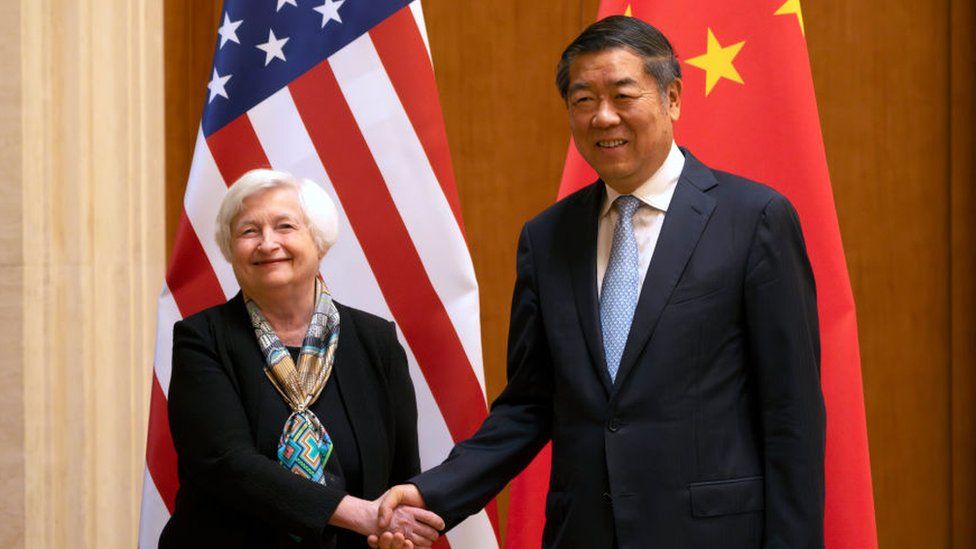 Getty Images
Getty ImagesUS Treasury Secretary Janet Yellen has said her visit to Beijing has marked a “step forward” in efforts to stabilise relations between the two countries.
Ms Yellen spoke at the end of a four-day trip, during which talks were held over issues including climate change.
She described the talks as “direct, substantive and productive” and said both sides had learned more about each other.
However, she admitted the US and China still had “significant disagreements”.
“No one visit will solve our challenges overnight,” she said.
“But this trip will help build a resilient and productive channel of communication with China’s new economic team.”
The US-China relationship has deteriorated in recent years. Issues dividing the country include human rights in Xinjiang and Hong Kong, territorial claims to Taiwan and the South China Sea and Beijing’s growing domination of a host of industries.
Chinese Vice Premier He Lifeng, who was among those to meet with Ms Yellen, said on Saturday he regretted “unexpected incidents” – such as the row over a spy balloon – had hurt ties with the United States.
Ms Yellen stressed the need for better communication in order to try and overcome these issues, adding that US President Joe Bien did “not see the relationship between the US and China through the frame of great power conflict.
“We believe that the world is big enough for both of our countries to thrive.”
On the issue of economic competition, Ms Yellen said the US sought a “dynamic and healthy global economy that is open, free and fair, not one that is fragmented or forces countries to take sides”.
She said any future curbs to business with China would be implemented “in a transparent way” and focus on sectors where the US had “specific national security concerns”.
Earlier in the visit, Ms Yellen criticised Beijing’s curbs against US firms, including the tightening of controls over exports of two materials crucial to producing computer chips.
The move follows Washington’s efforts in the past year to curb Chinese access to some advanced computer chips.
Ms Yellen said the US would fight back against China’s “unfair economic practices”.
In response, China’s finance ministry said “the nature of China-US economic and trade relations is mutually beneficial and win-win” and that there was no winner in a trade war.
On climate change, Ms Yellen urged Beijing to work with the US and support institutions like the Green Climate Fund, which was set up to help developing nations adapt to climate change and lessen its effects.
The Treasury Secretary was the second senior Washington official to visit Beijing in the last two months.
US Secretary of State Antony Blinken visited Beijing in June – the highest-ranking Washington official to visit the Chinese capital in almost half a decade.
His sentiments at the end of his trip echoed Ms Yellen’s. He said that while there were still major issues between the two countries, he hoped they would have “better communications, better engagement going forward.”
However, the next day President Joe Biden referred to Mr Xi as a “dictator” – triggering outrage from Beijing.
Despite the political tensions, trade between the two countries grew in 2022 for the third year in a row.
According to official figures, China exported more than $536bn (£422.3bn) worth of goods to the US last year, while $154bn of goods went in the other direction.
Related Topics
-
-
22 hours ago

-
Missing German man’s ‘cleaned’ Mercedes found in Pattaya

PATTAYA: Police have found a Mercedes-Benz coupe with traces of bathroom cleaner after its owner, a 62-year-old German property broker, went missing on July 4.
The silver Mercedes-Benz E350 coupe registered in Bangkok was found at the parking lot of CC Condominium on Khao Noi Road in tambon Nong Prue of Bang Lamung district on Sunday morning. It belonged to Hans Mack who has lived with his 24-year-old Thai wife for five years.
Pol Maj Gen Theerachai Chamnanmor, investigative chief of the Provincial Police Region 2, said on Sunday the discovery dimmed hopes for Mr Mack’s safe return because there were traces of either coolant or bathroom cleaner fluid on the seats, dashboard, steering wheel, gearbox and other interior parts of the car. The apparently “cleaned” parts showed solvent stains.
“There was intention to destroy evidence and the case indicates that Mr Hans Peter Ralter Mack’s disappearance was suspicious,” Pol Maj Gen Theerachai said.
A local food vendor said the car was parked there a few days ago and two women got out. One of them had dark skin and was about 160 centimetres tall.
A 54-year-old German woman, a property broker, told police she met Mr Mack on July 4 to discuss potential sales worth hundreds of millions of baht of a pool villa on Koh Samui and a boxing stadium in Bang Lamung district. After the talk, they separated.
The German man’s family has offered a 3-million-baht reward for information that could help locate him.
Mr Mack’s Thai wife, Piraya Boonmak, said he drove from their Swiss Paradise housing estate in Pattaya to meet a foreign property broker he had recently met. The family filed a disappearance complaint with local police on July 5.
The German man had two sons. One of them was in the country and the other was in Spain, she said.
Surveillance camera footage showed the German man went to a restaurant on Thung Klom-Tan Man Road at 11.54am on July 4 and left the place at 12.37pm on the same day.
He drove past Chaiyaphruek intersection towards Jomtien beach – the last known image of his whereabouts.

White stains are seen on the interior of the Mercedes-Benz coupe. Police suspect they resulted from cleaner fluid possibly used to destroy evidence. (Photo: Chaiyot Pupattanapong)
North Korea slams IAEA for Fukushima water approval
About 1.33 million cubic metres of groundwater, rainwater and water used for cooling have accumulated at the Fukushima nuclear plant, where several reactors went into meltdown after the 2011 tsunami overwhelmed cooling systems. The plant operator treats the water to remove almost all radioactive elements except tritium, and plans toContinue Reading
Japanâs automakers well behind the EV times
Japanese automakers are risking a repeat of the decline of Detroit’s big three automakers – Chrysler, Ford and General Motors – because of their resistance to electric vehicles (EVs). Nearly 40% of Americans who bought Teslas had switched from Japanese brands, primarily from Toyota and Honda.
At a time when 25% of new car sales in China are EVs or plug-in hybrids, a lack of EVs is costing Japanese brands sizeable sales. In a market weakened by Covid-19, Japanese brands tumbled the most — by a third from the year before — compared to just 9% for US and European brands.
After surpassing Germany to become the world’s second-largest auto exporter in 2022, China is on track to surpass Japan relatively soon. Given the long-term decline in car sales within Japan — with 2022 sales 26% below that of 1996 — a loss of market share in exports is a serious hit.
The export problem is also largely because of EVs, which now account for half of all Chinese automobile exports. Most of these are made by foreign brands, usually through joint ventures with domestic partners.
In the first half of 2022, Western Europe accounted for around 34% of China’s total car exports. China’s share of the European EV market is predicted to rise from 5% in 2022 to 15% as early as 2025.
Japanese automakers are finally waking up and making some changes. In December 2021, Toyota announced its goal of producing 3.5 million battery EVs by 2030, up from the previous goal of 2 million.
The new goal equals 35% of the company’s 2022 global sales. Honda now targets 2 million battery EVs by 2030, equal to half of current sales. Even with these changes, Japan significantly lags behind other wealthy countries.

Unfortunately, these companies are still hedging their bets by spending billions of dollars on cars that are either losing popularity — such as hybrids — or were never popular, like plug-in hybrids and the truly futile hydrogen fuel cell vehicle.
In 2022, global sales of battery EVs and plug-in hybrids combined overtook traditional hybrids, but sales of battery EVs were three times as high as plug-in hybrids.
In January 2023, the plug-in hybrid share in the United States was still a measly 1.2% while the battery EV share hit 6.2% and will keep rising. Bloomberg New Energy Finance believes that global gasoline car sales peaked in 2017 and will never recover.
Yet both Japan’s government and automakers are still obsessed with the romance of hydrogen fuel cell cars. Tokyo allots more subsidies to fuel cell cars than to EVs. The Mirai, Toyota’s fuel cell car, was introduced in 2015 but has only sold 22,000 units worldwide since then.
The irony is that Chinese brands seem to be repeating exactly what Japanese automakers did to Detroit’s big three, and for the same reason — a shift in technology and market conditions that dominant oligopolists fail to adapt to.
Until the two oil price shocks of the 1970s, Detroit’s big three’s market share held up at 85%. Then, oil prices suddenly rose at the same time as the government’s imposition of stricter pollution controls.
Japanese brands seized the opportunity to offer smaller, more reliable, fuel-efficient and less polluting cars, while Detroit resisted improving fuel efficiency and lowering emissions.
Japanese automakers also put computer chips into their cars before others. Within less than a decade of the oil price shocks, Japan became the world’s biggest auto exporter, prompting protectionist measures in both the United States and Europe.
Today, Detroit’s combined market share in the United States is down to just 40%, and Toyota has become the world’s biggest automaker, a status that General Motors previously enjoyed for 77 years.
Just as success blinded Detroit to a change in the times, it has done the same with Japanese brands. Just-retired Toyota chieftain Akio Toyoda dismissed EVs as overhyped and repeated the myth that shifting to EVs would actually increase carbon emissions.

The latter is only the case where coal generates an unusually high share of electricity — globally, EVs emit 30% fewer emissions than gasoline cars and the advantage keeps increasing as the use of renewables grows.
Toyoda’s successor, Koji Sato, told the press, “we will thoroughly implement electrification, which we can do immediately.” But many analysts remain skeptical of his commitment.
Japanese automakers seem to assume that they can still focus on hybrids and catch up if the time comes to focus on EVs. But it is not clear whether catchup will be easy, partly due to internal corporate culture.
It is common for managers and engineers at highly successful companies to become too attached to the business model and technology that originally brought them success. Insiders say that many Japanese executives hesitate to stray too far from the policies of the seniors who promoted them.
It is not impossible for Toyota, Honda and other Japanese automakers to change course and avoid a plunge in market share. But time is not on their side.
Richard Katz is Senior Fellow at the Carnegie Council for Ethics in International Affairs. This is an adapted version of a piece that originally appeared here on Japan Economy Watch.
This article was originally published by East Asia Forum and is republished under a Creative Commons license.
Dedicated colleague, gentle legal giant: Law fraternity pays tribute to late NUS professor Tan Yock Lin
SINGAPORE: Members of Singapore’s legal fraternity on Sunday (Jul 9) paid tribute to the late law professor Tan Yock Lin, describing the 70-year-old as a learned mentor always generous with his time for others. “We are profoundly saddened by Professor Tan Yock Lin’s passing, and our deepest condolences go outContinue Reading
Fake ‘transvestite’ nabbed for serial rape of aspiring models

Police in Bangkok have arrested a 60-year-old man who allegedly pretended to be a transvestite recruiting beautiful young women for modelling jobs and raped about 100 of them.
Pol Maj Gen Theeradet Thumsuthee, investigative chief of the Metropolitan Police Bureau, said Sonthichai Yusuparp was arrested in a room in a slum community in Dusit district on Saturday.
According to the chief, the man was wanted for rape under a warrant issued by the Criminal Court on June 27.
Sonthichai had been arrested for 14 cases of rape in 2015, when he told police he had raped at least 100 women. His victims included government officials, company executives and bachelor’s and master’s degree students. The man was released from jail on May 20 last year.
The rapist always pretended to be a transvestite who was looking for beautiful women at shopping malls on weekends to recruit them for show business. He then brought victims to hotels for “casting” but actually raped them there.
Before being arrested again on Saturday, Sonthichai used the same trick with a woman at a music school in a shopping mall in Lat Phrao area. There he called himself Bua and convinced the victim to bring him to her condominium. When unable to rape the victim, he fled.
Before the arrest, detectives were looking for the man at shopping centres in Bangkok for about two weeks. Finally spotting him, they had a plainclothes policewoman approach him by pretending to look for a job in the entertainment business.
From 1992 to 2009, the man worked as a construction worker, truck driver, production worker, security guard and curtain installer. He changed both jobs and residences in the capital.every 1-5 months.
In 2009 he got to know a person in show business and then pretended to be a transvestite who worked as a modelling agent, Pol Maj Gen Theeradet said.
Fake ‘transvestite’ nabbed for serial rape of wannabe models

Police in Bangkok have arrested a 60-year-old man who allegedly pretended to be a transvestite recruiting beautiful young women for modelling jobs and raped about 100 of them.
Pol Maj Gen Theeradet Thumsuthee, investigative chief of the Metropolitan Police Bureau, said Sonthichai Yusuparp was arrested in a room in a slum community in Dusit district on Saturday.
According to the chief, the man was wanted for rape under a warrant issued by the Criminal Court on June 27.
Sonthichai had been arrested for 14 cases of rape in 2015, when he told police he had raped at least 100 women. His victims included government officials, company executives and bachelor’s and master’s degree students. The man was released from jail on May 20 last year.
The rapist always pretended to be a transvestite who was looking for beautiful women at shopping malls on weekends to recruit them for show business. He then brought victims to hotels for “casting” but actually raped them there.
Before being arrested again on Saturday, Sonthichai used the same trick with a woman at a music school in a shopping mall in Lat Phrao area. There he called himself Bua and convinced the victim to bring him to her condominium. When unable to rape the victim, he fled.
Before the arrest, detectives were looking for the man at shopping centres in Bangkok for about two weeks. Finally spotting him, they had a plainclothes policewoman approach him by pretending to look for a job in the entertainment business.
From 1992 to 2009, the man worked as a construction worker, truck driver, production worker, security guard and curtain installer. He changed both jobs and residences in the capital.every 1-5 months.
In 2009 he got to know a person in show business and then pretended to be a transvestite who worked as a modelling agent, Pol Maj Gen Theeradet said.
China stoking incendiary doubt US would save Taiwan
China is ramping up its propaganda machine against Taiwan’s annual live-fire Hang Kuang Exercise scheduled for late this month, a bold show of force against Beijing’s stated “reunification” plans for the self-governing island.
This month, Reuters quoted several Taiwanese officials claiming that at least a dozen news reports from Chinese state media had framed Taiwan’s Han Kuang Exercise as an “escape rehearsal” for Taiwanese President Tsai Ing-Wen and US citizens on the island in the event of a Chinese invasion.
Reuters notes that such media reports first surfaced in May, with the information campaign believed to be organized by China’s Central Leading Group for Taiwan Affairs headed by President Xi Jinping and implemented by various government offices including the Taiwan Affairs Office in Beijing.
A Taiwanese official quoted by Reuters said that the campaign’s objective is to weaken public trust in and create panic around Taiwan’s leadership.
Taiwan’s Mainland Affairs Office said that China is always trying to “damage the prestige of our government, divide Taiwanese society and weaken the support of the international community,” adding that “the government will immediately clarify false information and use specific actions to show its determination to defend itself.”
The Han Kuang Exercise has been held annually since 1984, which includes computer simulations and live-fire exercises to test Taiwan’s readiness in the event of a Chinese invasion.
In April 2023, Asia Times reported that this year’s Han Kuang Exercise would include scenarios for breaking a Chinese blockade and defeating a Chinese amphibious assault, with a US-built computer system performing round-the-clock simulations of joint, combined and coalition operations.
It will also be the first iteration where Taiwan’s major international airport will be temporarily shut down during a simulation of repelling Chinese invaders.
Live-fire exercises will emphasize combat force protection, maritime interception, shielding of significant facilities such as seaports and airports, civil defense mobilization, air defense and countering an amphibious invasion.

Nonetheless, Han Kuang faces various limitations that will need to be addressed to better prepare Taiwan against a potential Chinese invasion. Critics point to Han Kuang’s limited scope, short timeframe and piecemeal nature, particularly in regard to civil defense scenarios.
Asia Times noted in May 2023 that Taiwan must field 360-400 fighters to defend against 700 People’s Liberation Army-Air Force (PLA-AF) jets stationed nearby the island. While periodic upgrades to Taiwan’s fighter fleet have enhanced its effectiveness, they likely haven’t been sufficient to counterbalance the PLA-AF’s greater size and presence.
Taiwan’s air force may also have a readiness problem, with barely half of its fighters believed to be operational. It would also take at least a week to move the jets into hardened shelters, a major weakness if China mounts pre-emptive air and missile attacks to destroy the jets on the ground.
Aging aircraft are also a concern as Taiwan’s F-16s and Indigenous Defense Fighters (IDF) were delivered in the 1990s, posing an obsolescence risk without corresponding upgrades.
Taiwan’s inability to acquire newer aircraft may put it at a long-term disadvantage versus the PLA-AF, with concerns over Chinese espionage precluding US F-35 sales to the Taiwan air foce.
Taiwan also faces a fighter pilot shortage, forcing it to lower entry standards for prospective pilots, recruit officers from other military branches for pilot training, and allow pilots trained on other jets to fly F-16s.
Han Kuang’s limited civil defense scenarios may prove to be a liability considering China’s extensive penetration of Taiwan’s military, with top-ranking Taiwanese officers known to have leaked classified and sensitive information to Chinese spies.
That leaked intelligence could help China with invasion preparations. It could also result in turncoat Taiwanese officers refusing to fight, misdirecting troops or even defecting outright when an invasion starts.
Chinese agents can also spearhead possible decapitation operations against Taiwan’s command and control, political and military leaderships.
While China may actively promote propaganda to undermine Taiwan’s will to resist, there may be some element of truth in its “escape plan” spin.
In December 2022, Asia Times reported on a possible US “scorched earth” strategy for Taiwan involving disabling or destroying the self-governing island’s strategic semiconductor factories and evacuating its top semiconductor engineers and scientists for refuge in the US in a worst-case scenario.
Such a strategy threatens to destroy Taiwan Semiconductor Manufacturing Company’s (TSMC) manufacturing facilities, which produce 55% of the world’s advanced chips used in everything from mobile phones to sophisticated military weapons and equipment.
The destruction of TSMC’s facilities would cripple China’s war effort and inflict quick and deep economic damage, undermining the legitimacy of the Chinese Communist Party not to mention torpedo the global economy.
If implemented, such a scorched earth strategy would raise hard questions about the US’ war capabilities and ability and commitment to defend its other regional allies like Japan, South Korea and the Philippines.
Disingenuously framing the Han Kuang Exercises may be part of China’s larger strategy to subdue Taiwan without force.
While China has long threatened Taiwan with punitive economic and military action, the threats have not dissuaded Taiwan’s leadership and population from hinting at or implying de facto or eventual independence.
In January 2023, Asia Times reported on China’s “smart deterrence” strategy, wherein its “intelligentized warfare” operating concept aims to seize control of the information domain to deter or manage a conflict.
China has also been honing its “cognitive domain operations” concept, which uses artificial intelligence (AI) to supercharge its previous public opinion and psychological warfare tactics.

China’s propaganda operations aim in part at stoking shaky public confidence in US security guarantees, potentially influencing Taiwan’s 2024 presidential election results towards pro-China candidates, alongside covert funding for the latter.
While Taiwan’s democratic survival is contingent on US military intervention, a 2022 Inkstick survey shows that among Taiwan’s “government workers,” which includes military service members, 70% have no confidence in a US intervention in the event of a Chinese invasion.
The same survey shows 53.8% of Taiwanese aged 20 and above believe there would not be a US military intervention on behalf of Taiwan, while only 36.3% said they do.

